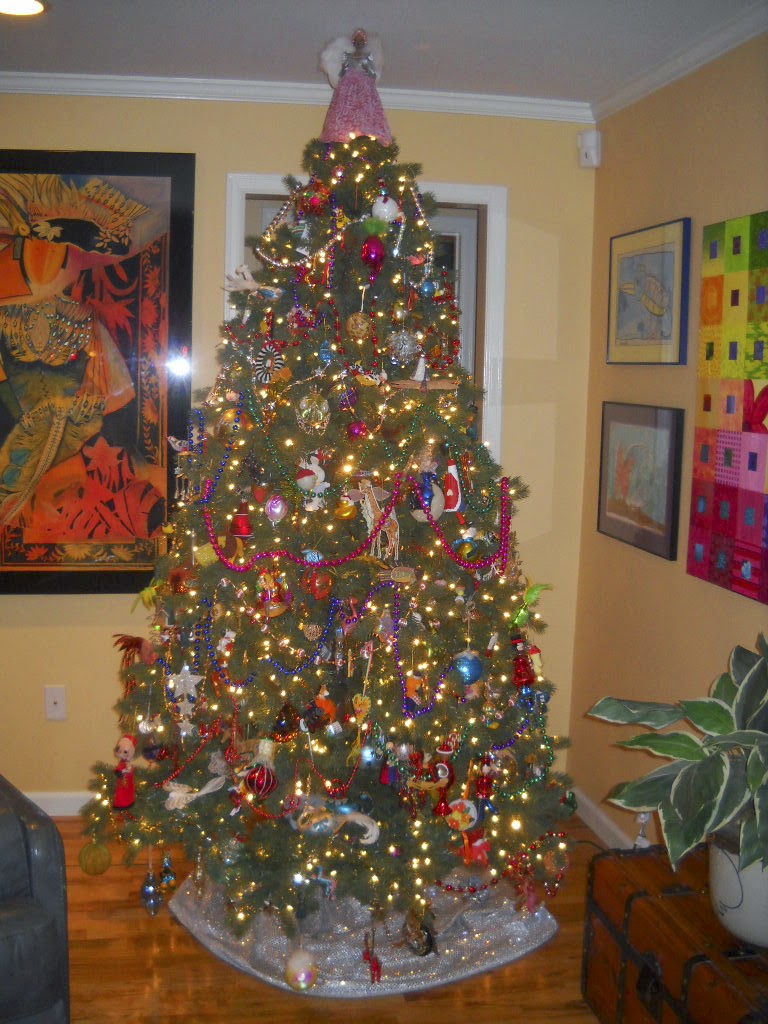The custom of the Christmas tree developed in early modern Germany with predecessors that can be traced to the 16th and possibly 15th century, in which "devout Christians brought decorated trees into their homes." Christmas trees were hung in St. George's Church, Sélestat since 1521. It acquired popularity beyond Germany during the second half of the 19th century. The Christmas tree has also been known as the "Yule-tree", especially in discussions of its folkloristic origins.
The tree was traditionally decorated with edibles such as apples, nuts, or other foods. In the 18th century, it began to be illuminated by candles which were ultimately replaced by Christmas lights after the advent of electrification. Today, there are a wide variety of traditional ornaments, such as garland, tinsel, and candy canes. An angel or star might be placed at the top of the tree to represent the angel Gabriel or the Star of Bethlehem from the Nativity.
skip to main |
skip to sidebar


A FINE LINE; Techniques and Inspirations for Creating the Quilting Design

 Posts
Posts

 Posts
Posts
My quilts are colorful, graphic, vibrant, and joyful!

- Melody Crust
- My quilts are colorful, graphic, vibrant and joyful!! I use color and texture to explore the glories of nature. Realism or abstraction, are used as best fits a theme or concept. I enjoy the challenge and excitement of translating my vision into quilts through a rich variety of fabrics, gilding and embellishment. I find such joy in being able to express myself through quilting, that I'm not comfortable without a needle in my hand. Quilting is my life's work and a wonderful one at that. The best quilt is always the next one.
Currently available books:

A FINE LINE; Techniques and Inspirations for Creating the Quilting Design
link to web site
Subscribe To Melody Crust


Blog Archive
-
▼
2014
(183)
-
▼
December
(13)
- Fashions on the Hangar
- Guest Artist - Jill Smith
- Merry Christmas to All
- Fashions Featuring Beaded Bags
- A Private Tour of This Elegant Old House
- My first time in Iowa, visiting Dubuque
- BERNINA and sewing
- BERNINA Creative Center
- More Jewelry
- This Jewelry Lover Buys Again!
- The Flapper
- The Wizard
- Christmas is Coming!
-
▼
December
(13)







No comments:
Post a Comment